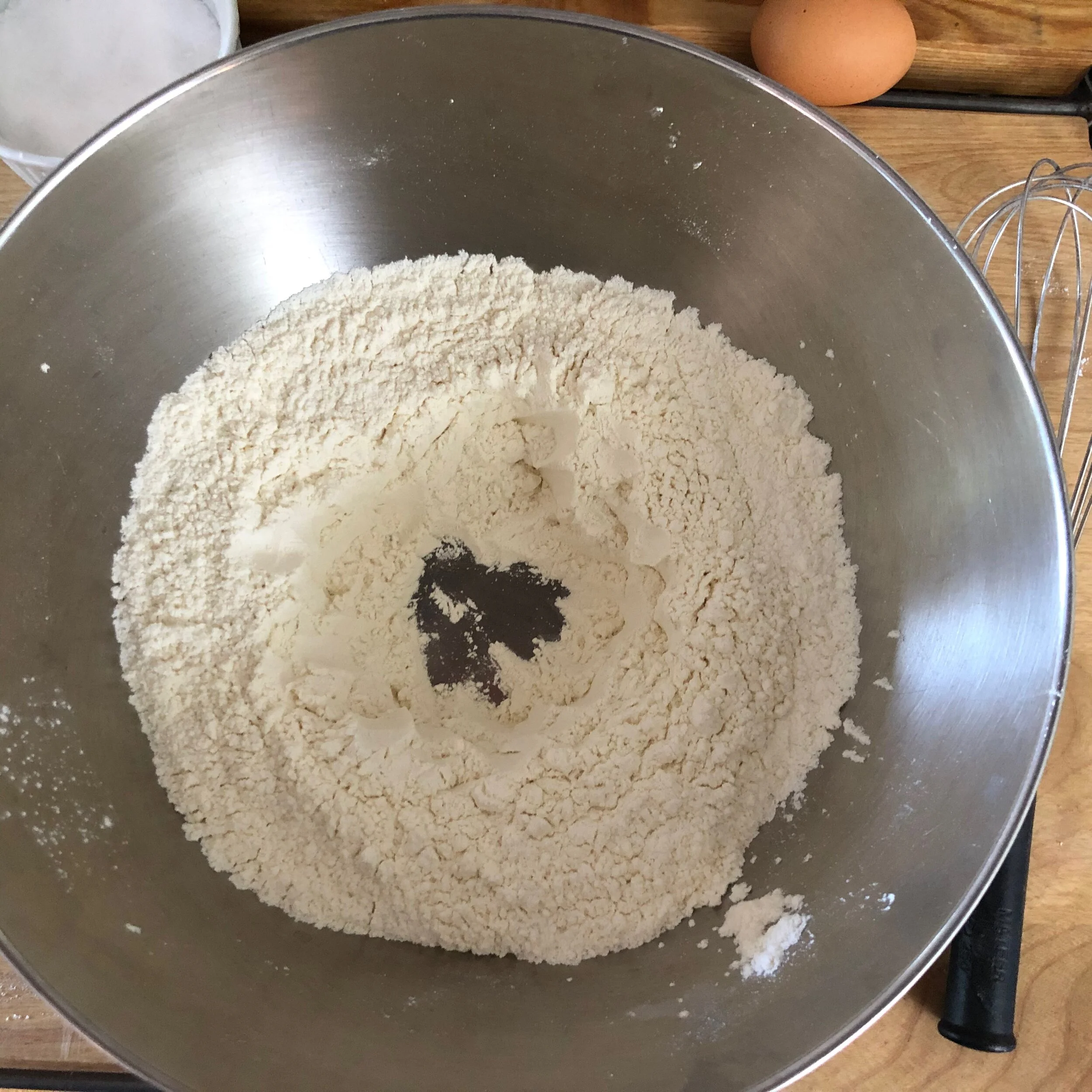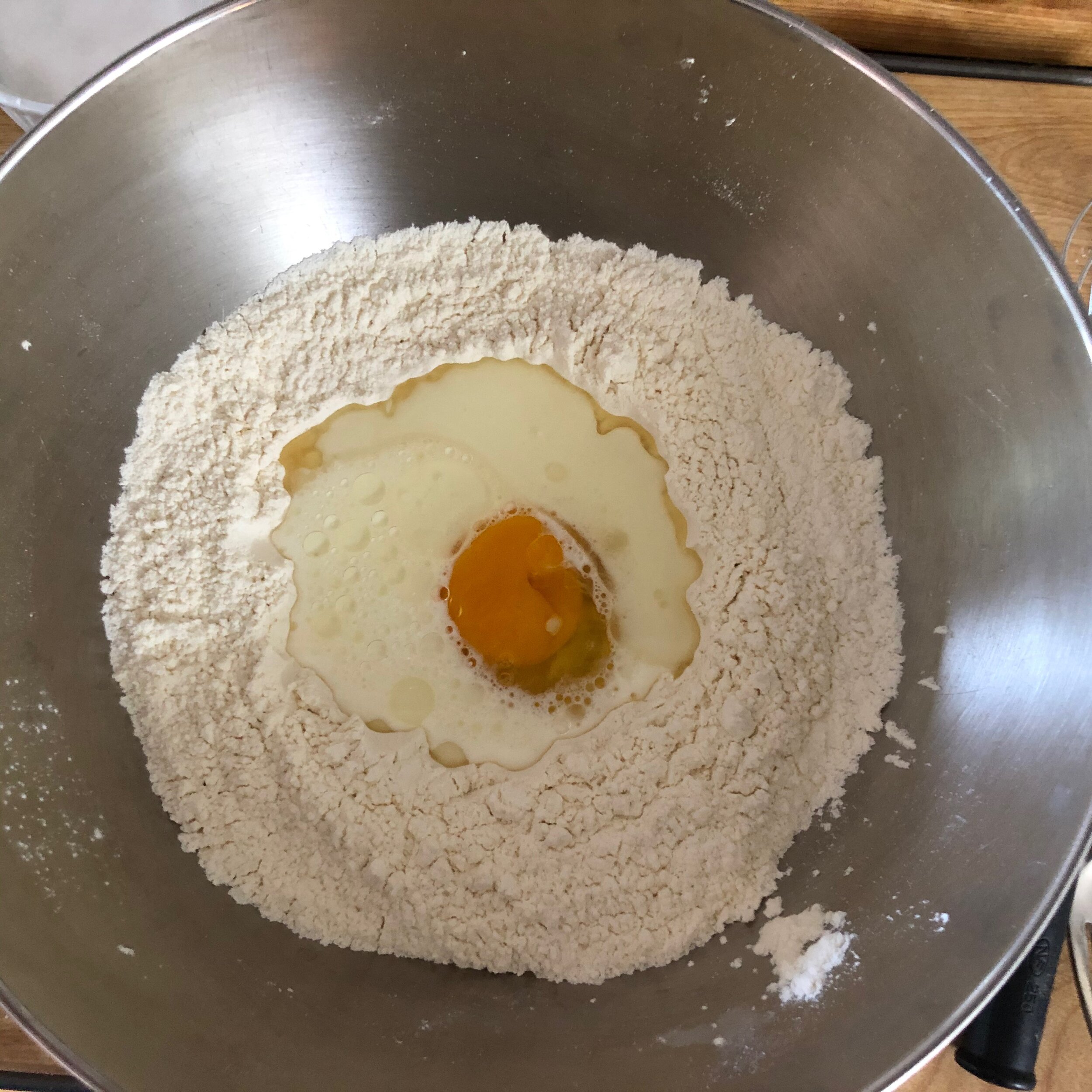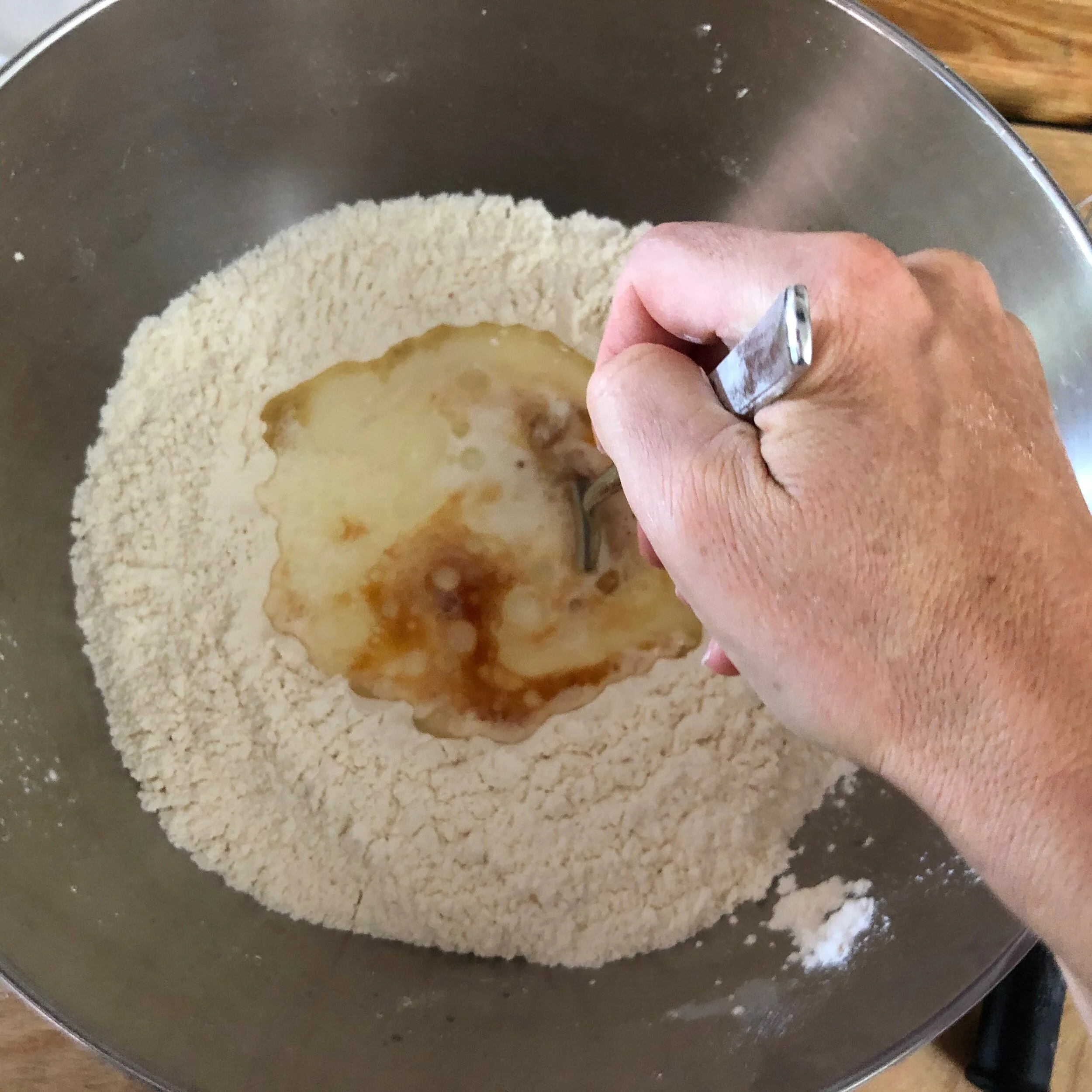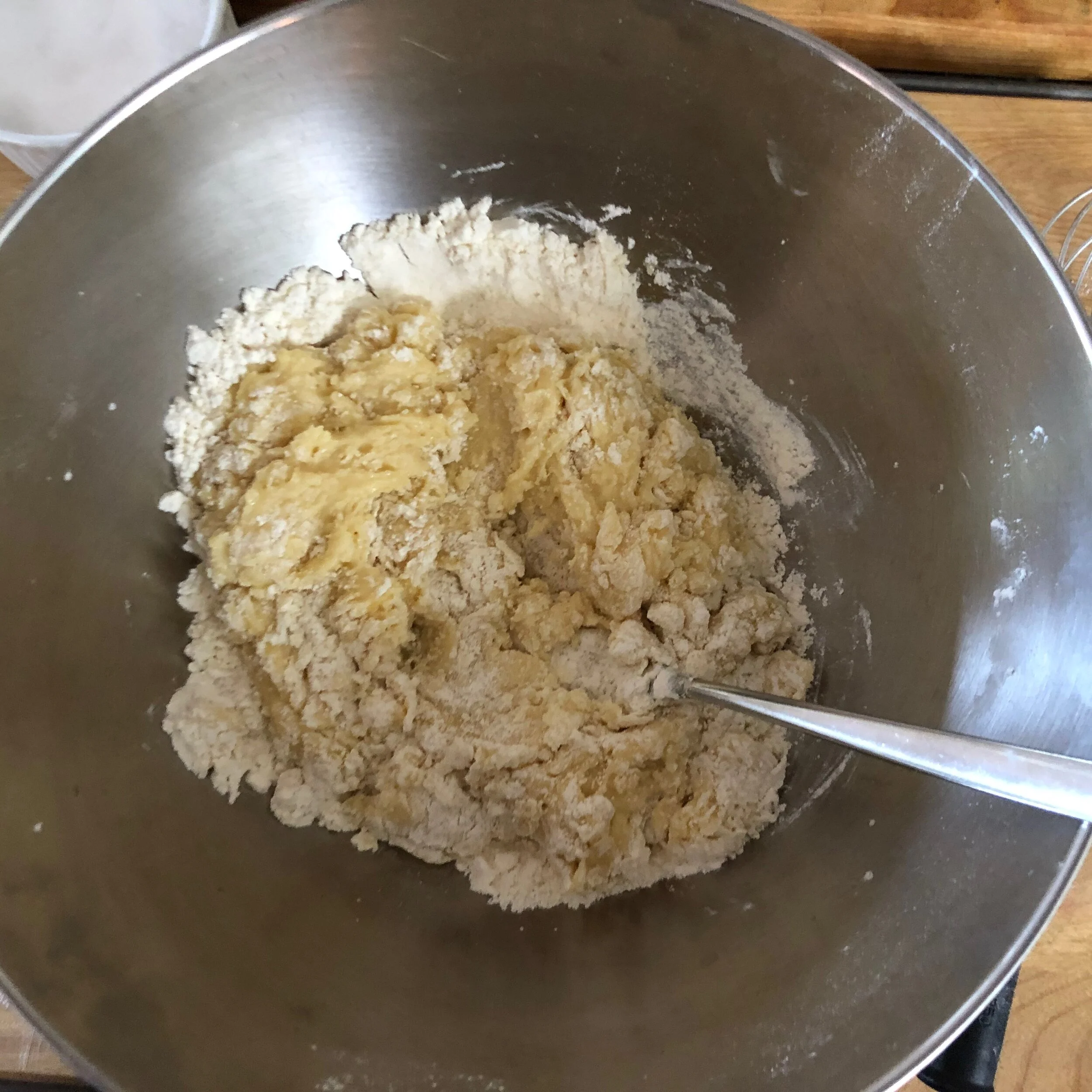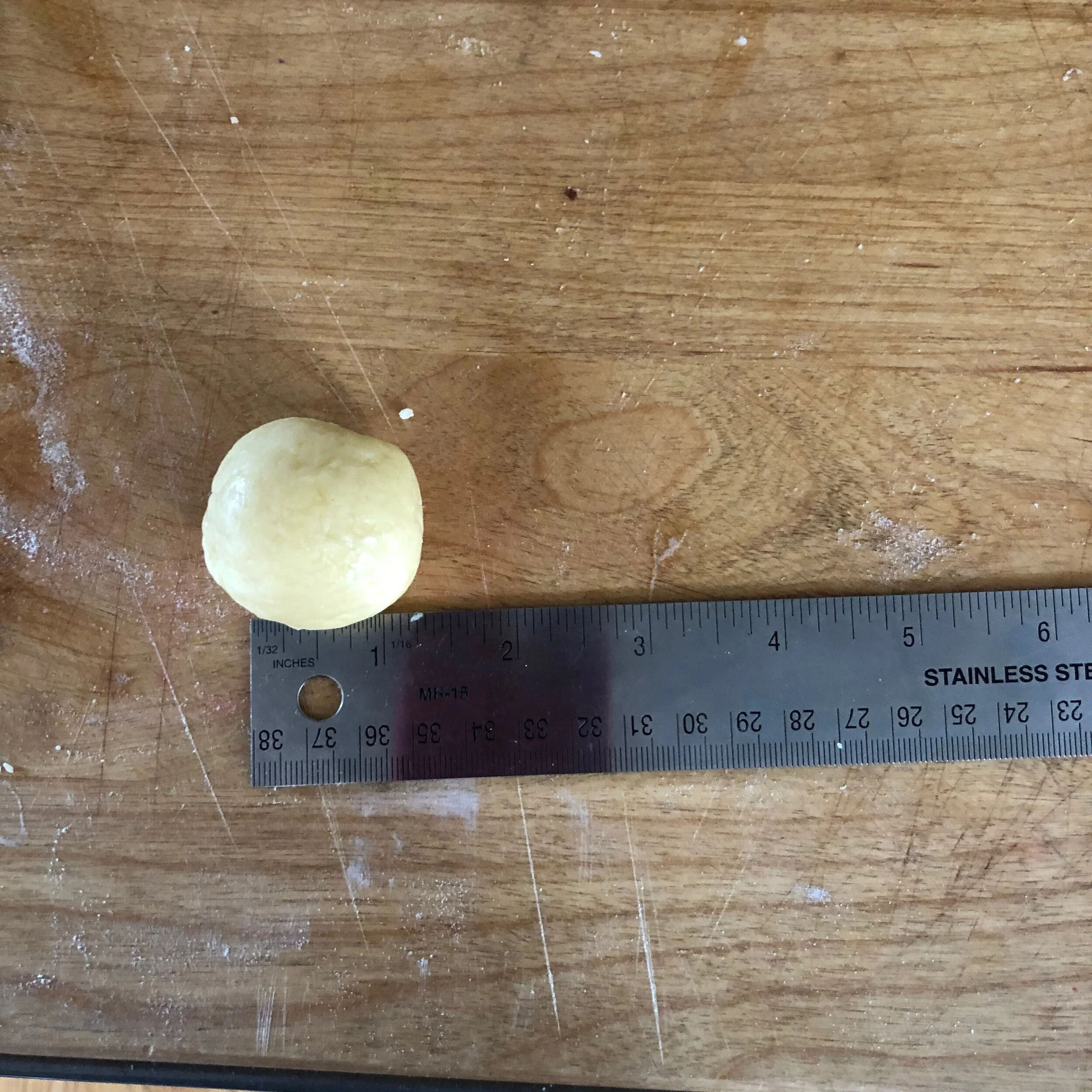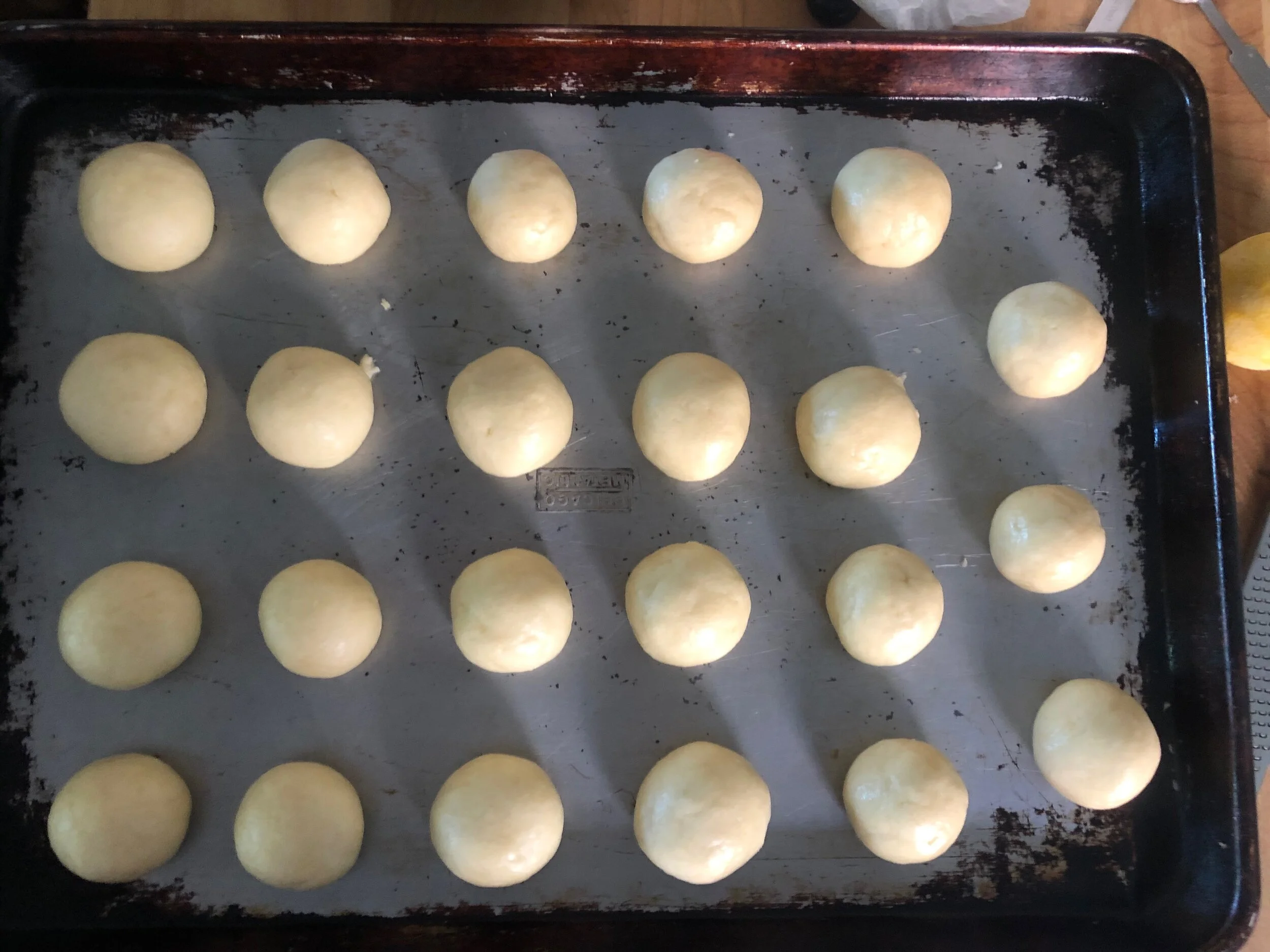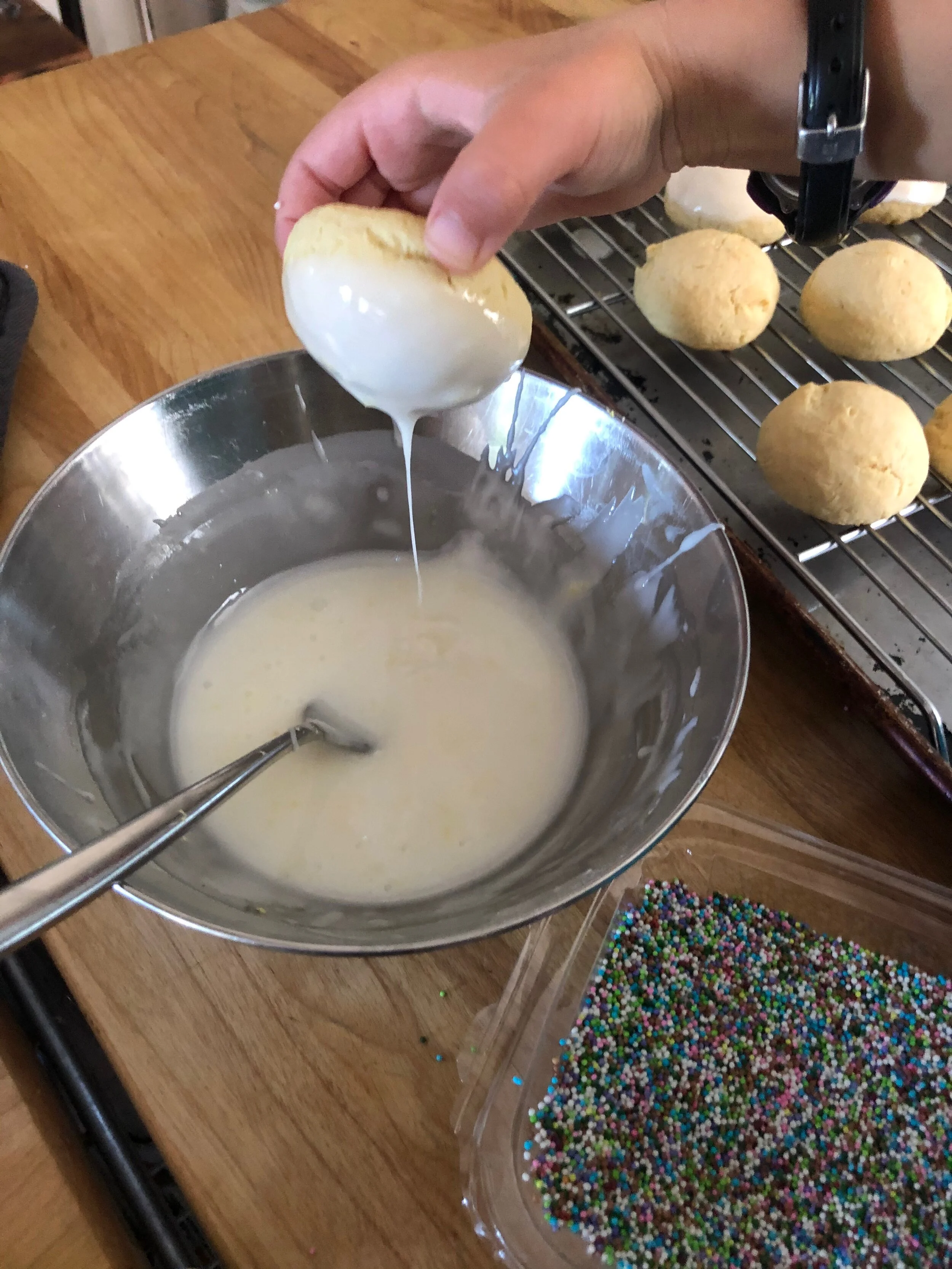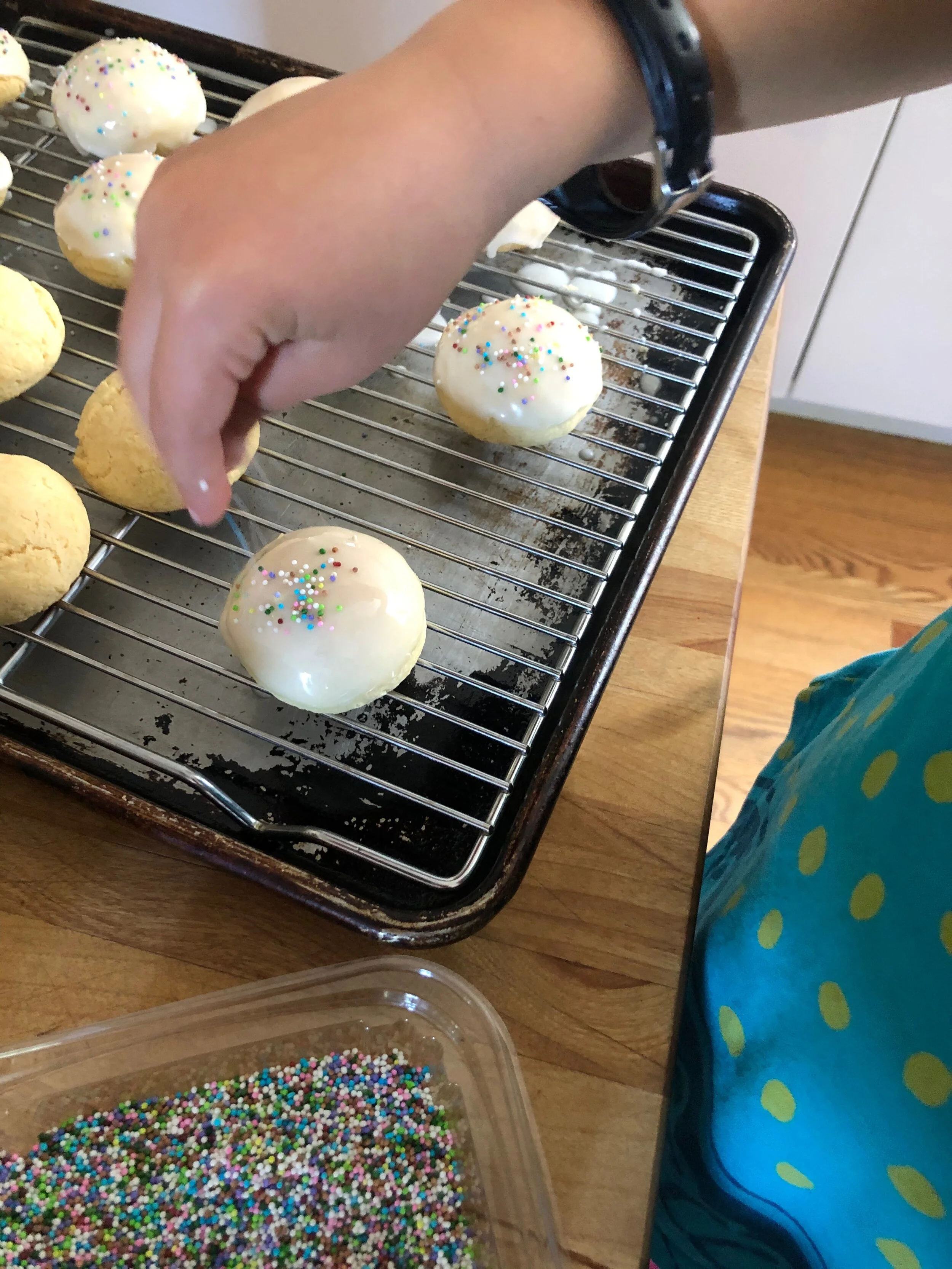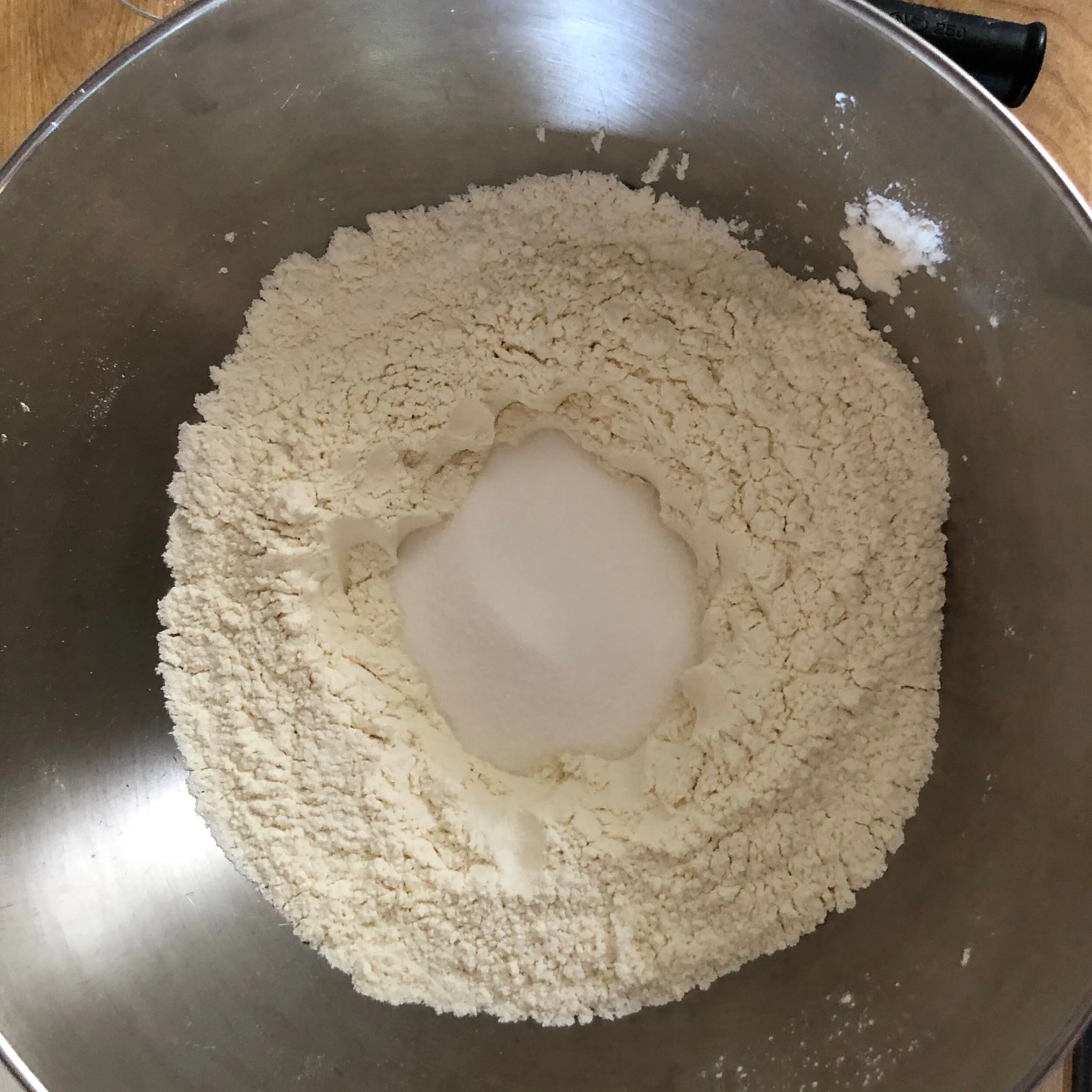Nonna Santopietro's Italian Lemon Cookies
Nonna Santopietro's Italian Lemon Cookies
Do you have a dessert that a grandparent, friend, uncle, or parent makes for you? A cookie or cake that makes you feel loved? My Italian grandmother’s lemon cookies are that to me. Every time I’d visit my Nonna, she’d offer me one of her doughy-yet-tender, lemony cookies topped with a thin lemon glaze. I adored them! The funny thing, I didn’t even know what these cookies were called. We just call them “Nonna’s cookies”.
Now I know that Nonna’s cookies are called Anginetti. Other names for the cookie include: Italian wedding cookies, Italian lemon cookies, knot cookies, ancinetti, or ginetti. They are made all over southern Italy, especially in Campania, and are served on special occasions and holidays like Christmas and Easter.
My Nonna always had them on hand for me, my cousins, her neighbors, or the letter carrier. When I grew older, I asked her to make them with me. We mixed the dough, shaped them into little ping-pong-size balls and baked them until they browned on the bottom. Now I share these cookies with my own children, friends, neighbors, UPS driver… and you.
Makes 20 to 24 cookies.
Ingredients:
For the cookies:
2 1/2 cups all-purpose flour
1 1/2 tablespoons baking powder
Pinch of salt
1/2 cup granulated sugar
Zest of 1 lemon (optional)
1/4 cup vegetable oil
1/2 cup whole milk
1 egg
1/2 teaspoon vanilla
1/2 teaspoon lemon extract
1 tablespoon butter
For the glaze:
1 1/2 cups confectioner's sugar
2 tablespoons whole milk, plus more as needed
1 teaspoon lemon juice (optional)
1/4 teaspoon lemon extract
Colorful nonpareil or other sprinkles (optional)
Steps:
1. Set a wire rack slightly below the center of the oven. Heat the oven to 350°F.
2. Make the cookie dough: In a large bowl, whisk together the flour, baking powder, and salt. Use your hands to form a wide hole in the middle of the flour so that you can see the bottom of the bowl. To the hole, add the sugar, and if you choose lemon zest. To the sugar, add the oil, milk, egg, vanilla, and lemon extract, keeping it all in the center. Using a fork, beat the wet mixture only inside the ring of flour, keeping it inside the hole you’ve created, until well mixed. Using your fork, gradually pull a little flour from the sides of the bowl into the wet mixture. Keep pulling in some flour, a little at a time, until all of the flour has been combined. Once a wet dough has formed, give it a few presses with your hands to bring it together. (Do not work it too much, because you don’t want to activate the gluten proteins in the flour. When glutens form, they make the cookies chewy instead of soft and crumbly.) Let the dough rest.
3. Meanwhile, apply a thin layer of butter to a large baking sheet.
4. Roll the dough into roughly 1 1/2-inch balls, slightly smaller than a ping pong ball. Lay them on the greased baking sheet about 1 inch apart. Cook until the bottoms brown, for about 15 minutes, rotating the pan halfway through the cooking. Using a spatula, transfer the cookies to a wire rack to cool completely.
5. Make the glaze: Combine the confectioner's sugar, milk, lemon juice (if using), and lemon extract in a medium bowl. When you lift a spoon from the mixture, it should flow quickly. If it’s too thick, add 1 teaspoon of milk at a time until the desired consistency.
6. Set a wire baking rack over a baking sheet. Holding the bottom of the cooled cookies, dip the cookie tops into the glaze, shaking off excess. Lay the cookies, frosting-side-up, on the baking rack. If you choose, top with nonpareil or sprinkles while still wet (they dry fast). Let sit until the frosting completely dries.
Note: If you don’t have lemon extract, you can use lemon juice only, just add a bit more juice and a bit less milk to the glaze. And vice versus. If you don’t have a lemon, use lemon extract only without adjusting the quantity.


